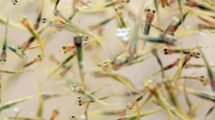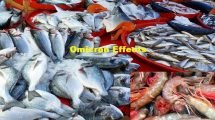Cow-based economy, IIM-A suggests cow face recognition tech to connect them with sponsors.
Cows are considered the backbone of the rural economy, but they are underutilized in terms of productivity. However, a leading business school has presented a facial recognition technology-based development plan that incorporates stray cattles.
An Indian Institute of Management Ahmedabad (IIM-A) study suggests a concept for stray cows that uses face recognition technology to connect them with sponsors in order to accomplish ‘Gai Aadharit Unnati (GAU),’ or cow-based development.
Also Read | First-of-its-kind in country, Agri Land Price Index launched by IIMA-SFarmsIndia.
The working paper, co-authored by IIM-A faculty member Amit Garg and colleagues, suggests adopting an Artificial Intelligence (AI)-based model for a self-sustaining cow-based economy to connect stray cows that wind up in shelters with donors.
In January of this year, the ‘GAU model,’ comprising the IT platform, was released for live demonstration in Vadodara, Gujarat.
According to the report, ‘Gai Aadharit Unnati (GAU): Modernising Cow-based Economy via Application of Advanced Technology,’ plans are in the works to deploy the concept in Uttar Pradesh. An NGO (non-governmental organization) and a panjrapole (cow barn) servicing 1,000 cows have been chosen for a live demonstration.
A ‘GAU Vision App’ is used to recognize cow faces. According to the statement, such cows’ profiles are made on the site that a donor uses to make gifts.
TechMachinery Labs conducted in-house and proprietary research to develop machine learning models for recognizing a cow’s face from a live cow or a picture. According to the research, ‘the face can be recognized for all cows for whom the model is trained with a minimum accuracy level of 92%.’
Donor funds will be directed to an NGO via the GAU network, with the volunteer organization giving fodder through a firm.
According to the authors, such a platform would provide transparency in the distribution of cash and allow a donor to select one or more cows from the database and give for them on a regular basis, building a type of personal relationship between them.
‘Economical optimization of stray cow by-products: cow dung derivatives such as cakes, compost, briquettes, incense sticks, and so on, and cow dung as such as well as urine may be sold to biogas/biofertilizer producing facilities for further economic advantages,’ the research stated.
The model’s real-world implementation also indicates how a community biogas plant may help communities and even cities become self-sufficient and reduce their reliance on LPG, according to the study.
Also Read | Trained management professionals can better fix Agri-business problems: IIM-A.
According to the paper, ‘in the long run, the proposed model relies more on internal revenue generation and phasing out the donation part to enable the GAU-based sustainability model for an economy.’
The publication cites the 20th livestock census, which indicates that there are 50 lakh stray cows in the country, with their numbers increasing, particularly after the recent ban on cow slaughterhouses.















Add Comment